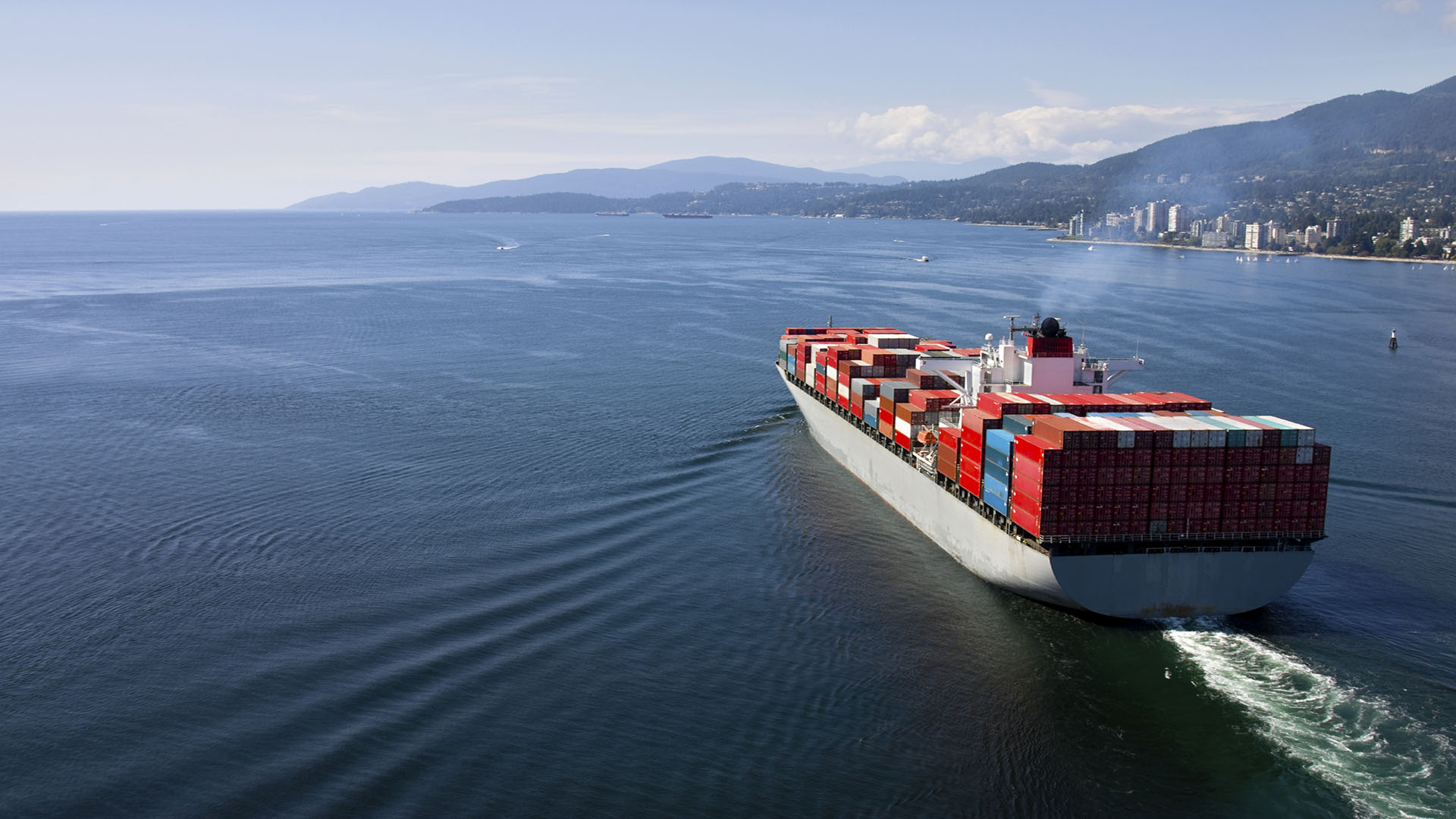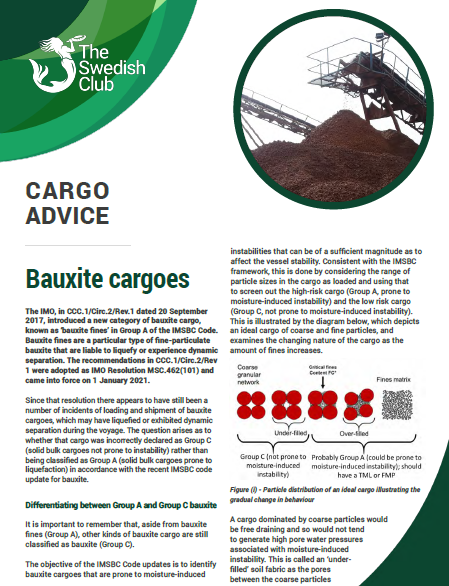
Bauxite
The IMO, in CCC.1/Circ.2/Rev.1 dated 20 September 2017, introduced a new category of bauxite cargo, known as ‘bauxite fines’ in Group A of the IMSBC Code. Bauxite fines are a particular type of fine-particulate bauxite that are liable to liquefy or experience dynamic separation. The recommendations in CCC.1/Circ.2/Rev 1 were adopted as IMO Resolution MSC.462(101) and came into force on 1 January 2021.
Since that resolution there appears to have still been a number of incidents of loading and shipment of bauxite cargoes, which may have liquefied or exhibited dynamic separation during the voyage. The question arises as to whether that cargo was incorrectly declared as Group C (solid bulk cargoes not prone to instability) rather than being classified as Group A (solid bulk cargoes prone to liquefaction) in accordance with the recent IMSBC code update for bauxite.
Differentiating between Group A and Group C bauxite
It is important to remember that, aside from bauxite fines (Group A), other kinds of bauxite cargo are still classified as bauxite (Group C).
The objective of the IMSBC Code updates is to identify bauxite cargoes that are prone to moisture-induced instabilities that can be of a sufficient magnitude as to affect the vessel stability. Consistent with the IMSBC framework, this is done by considering the range of particle sizes in the cargo as loaded and using that to screen out the high-risk cargo (Group A, prone to moisture-induced instability) and the low risk cargo
(Group C, not prone to moisture-induced instability).
Read more in the publication below

Bauxite
The IMO, in CCC.1/Circ.2/Rev.1 dated 20 September 2017, introduced a new category of bauxite cargo, known as ‘bauxite fines’ in Group A of the IMSBC Code. Bauxite fines are a particular type of fine-particulate bauxite that are liable to liquefy or experience dynamic separation. The recommendations in CCC.1/Circ.2/Rev 1 were adopted as IMO Resolution MSC.462(101) and came into force on 1 January 2021.